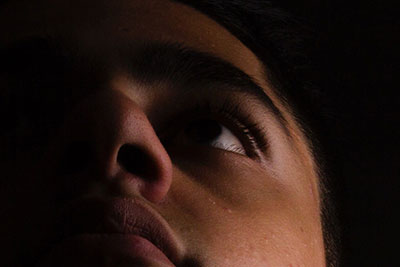Thyroid Eye Disease
Thyroid eye disease is an ocular manifestation occurring in a significant percentage of Graves Disease sufferers, to varying degrees.
There is expansion of muscles and fat within the eye socket (orbit) pushing ocular structures forward making the eyes appear more prominent.
Importantly in its more severe form there can be compression of the optic nerve or exposure of the cornea from inability to close the eyelids. This can threaten vision. Thankfully this complication only occurs in 5% of cases but requires urgent medical and possible surgical treatment.
The natural history of thyroid eye disease follows 'rundles curve' whereby there is an active (inflammatory phase) lasting approximately 6-18 months. During this period the eyes and eyelids will be inflamed and red, and may appear to bulge. There may be double vision especially looking up and increased fat within the eyelids. Treatment during this stage is generally aimed at minimising inflammation whilst the disease burns itself out. This is followed by a quiescent (burnt out) phase thereafter where inflammatory signs and symptoms settle but the eyes and eyelids may remain prominent. Treatment during this phase is generally aimed at correcting any abnormal eye position, ocular motility impairment, eyelid malposition or cosmesis. The disease can rarely reactivate.
Non-Surgical Treatment Options:
Smoking can prolong the inflammatory phase and impair response to treatment. We highly recommend quitting smoking for all cases.
Selenium supplementation has been shown to help quality of life when used in a selenium deplete population. Regardless we recommend selenium supplementation to most new cases. This is as easy as eating a few brazil nuts each day.
Optimisation of thyroid hormone control is important in the treatment of thyroid eye disease and collaboration with an endocrinologist is critical.
Topical lubrication is also helpful in many patients.
Surgical Treatment Options:
Medical treatment of thyroid eye disease depends on the stage of the disease.
Treatment in the active phase is generally aimed at minimising the inflammatory component and expediting the quiescent (burnt-out) phase. Treatment in the inactive (quiescent-bruntout) phase is generally aimed at surgical correction of eye or eyelid malposition as well as ocular motility impairment.
Eye Malposition, Orbital Decompression - Fortunately this surgery is uncommon but may be required in emergent situations where active inflammation is causing compression of the optic nerve or exposure of the cornea. It may also be performed in the inactive phase for cosmetically unacceptable proptosis (eye protrusion) or eyelid malposition.
Eye Muscle Surgery - The muscles of the eye can be strengthened, weakened or their vector of force repositioned to enable resolution of double vision in straight ahead gaze or reading position.
Eyelid Malposition Surgery, Upper Eyelid Retraction - A common complication of thyroid eye disease or overcorrction of either ptosis surgery or complicated blepharoplasty. The muscles that lift the eyelid can be relaxed allowing the lid to sit lower. Common complications can include creation of a second eyelid crease and contour abnormalities.
Blepharoplasty - Blepharoplasty enlargement of the fat content of the orbit and eyelid may leave the patient with baggy appearance and excess bulk to the eyelids. Blepharoplasty involves removal of excess skin and fat of the upper and/or lower eyelids.


